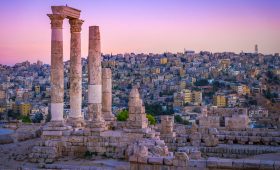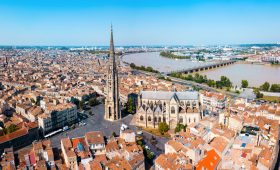Blyde River Canyon: A Natural Wonder in South Africa
What Makes Blyde River Canyon Unique?
Situated in the Mpumalanga province, Blyde River Canyon is one of the world’s largest canyons. Its diverse landscapes and striking beauty make it a compelling destination for nature lovers and adventurers. The canyon is named after the Blyde River, now known as the Motlatse River, which means “happy river” in old Dutch. This name commemorates a group of voortrekkers who joyfully reunited after a perilous journey in 1844.
The canyon’s appeal lies in its dramatic cliffs, lush vegetation, and rich wildlife. It supports a wide array of species, including hippos, crocodiles, and every primate species found in South Africa. Birdwatchers will find a paradise here, with species like the Narina trogon and Cape vulture gracing the skies.
Best Time to Visit
Plan your visit during the dry season, from May to September. The weather is mild, with clear skies and comfortable temperatures. Remember, South Africa’s seasons are opposite to those in the Northern Hemisphere, so adjust your travel plans accordingly.
How to Get There
Most international travelers arrive at O.R. Tambo International Airport in Johannesburg. From there, you can rent a car for a scenic drive to the canyon or take a domestic flight to Kruger Mpumalanga International Airport, which is closer. Public transportation options include buses or trains to Graskop, a nearby town, where you can hire a guide or taxi to reach the canyon.
Local Transportation
Exploring Blyde River Canyon is best done by car, offering the flexibility to navigate its scenic routes. If driving isn’t your preference, consider hiring a local guide or joining a guided tour. Hiking trails are available for those who enjoy exploring on foot. Wear comfortable shoes and bring water and snacks.
Top Attractions
1. God’s Window
God’s Window is a renowned viewpoint offering sweeping vistas of the surrounding landscapes. On clear days, you might even glimpse Mozambique. The view is nothing short of spectacular.
2. Bourke’s Luck Potholes
These natural rock formations, created by centuries of erosion, are a geological marvel. The swirling waters have carved out unique patterns and colors, making it a favorite spot for photographers.
3. Three Rondavels
The Three Rondavels are iconic rock formations resembling traditional African huts. They offer breathtaking views and hold cultural significance. Take time to learn about their history while enjoying the scenery.
4. Kadishi Tufa Waterfall
At 200 meters, the Kadishi Tufa waterfall is the second tallest tufa waterfall in the world. Its formation resembles a face, often referred to as ‘the weeping face of nature.’ It’s a sight that captures the imagination.
Summary
- Blyde River Canyon is one of the largest canyons globally, located in South Africa’s Mpumalanga province.
- The canyon features dramatic cliffs, lush vegetation, and diverse wildlife.
- The ideal time to visit is during the dry season, from May to September.
- Access the canyon via O.R. Tambo International Airport in Johannesburg, then drive or fly to Kruger Mpumalanga International Airport.
- Transportation options include renting a car, hiring a guide, or joining a guided tour.
- Key attractions include God’s Window, Bourke’s Luck Potholes, the Three Rondavels, and the Kadishi Tufa Waterfall.



